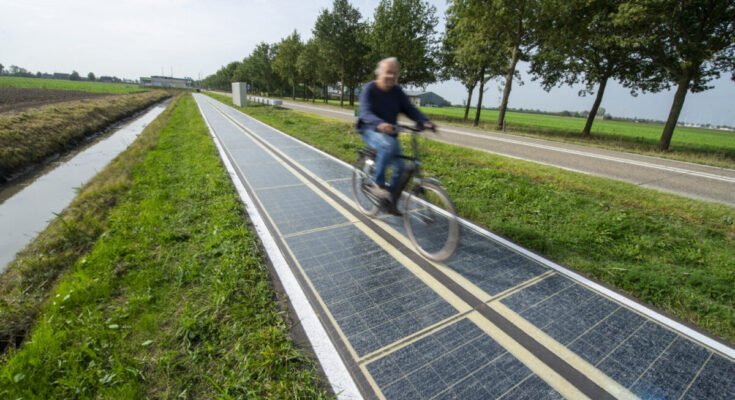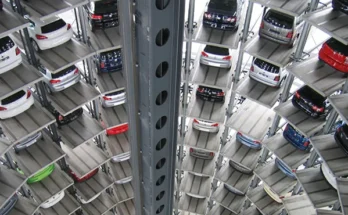In a bold move toward sustainable infrastructure, the Netherlands made history in 2014 by unveiling SolaRoad—the world’s first solar-powered bike path. Located in Krommenie, a suburb just outside Amsterdam, this innovative 70-meter stretch of road marked a significant step toward reimagining everyday infrastructure as a source of renewable energy. Paved with specially designed, glass-coated solar panels, SolaRoad isn’t just a futuristic idea—it’s a real-world project that proves roads can do more than connect destinations; they can help power them too.
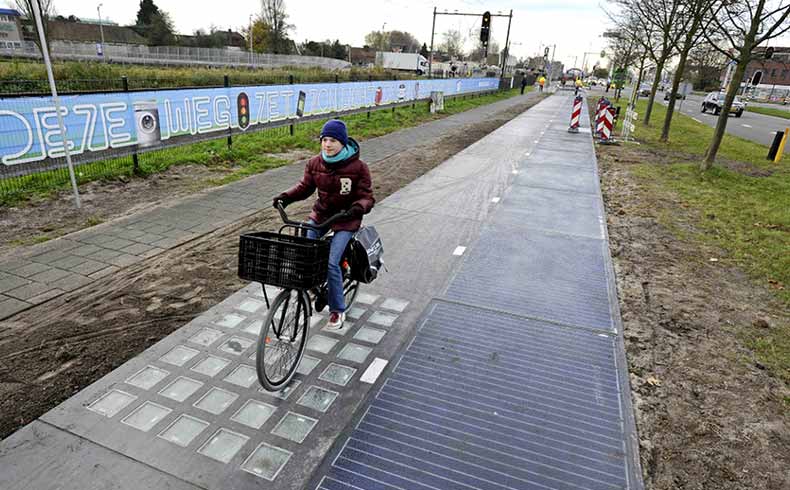
The concept behind SolaRoad is brilliantly simple yet revolutionary: embed solar cells directly into a bike path to harvest solar energy as cyclists ride over it. The surface of the path is made from tempered safety glass strong enough to withstand the weight of bikes, weather extremes, and even occasional maintenance vehicles. Beneath this protective layer lie crystalline silicon solar cells, similar to those found in traditional rooftop panels. These cells are carefully arranged and protected by layers that ensure durability, transparency, and traction for safety.
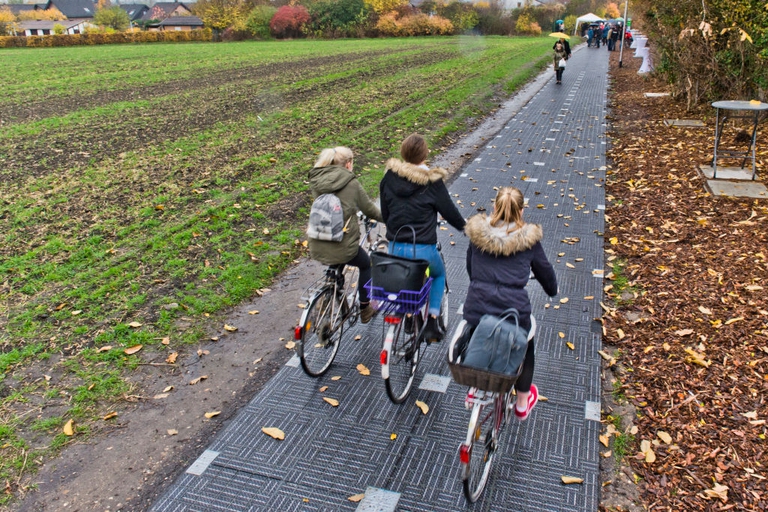
When first introduced, many skeptics questioned whether the solar bike path would be efficient or even functional. But the results spoke for themselves. In just the first year of operation, the 70-meter strip of solar road generated over 3,000 kilowatt-hours (kWh) of electricity—enough to power a single-person household for an entire year. The electricity produced is fed directly into the grid and used to power nearby streetlights, traffic systems, and even homes. It’s a small step, but one with massive potential.
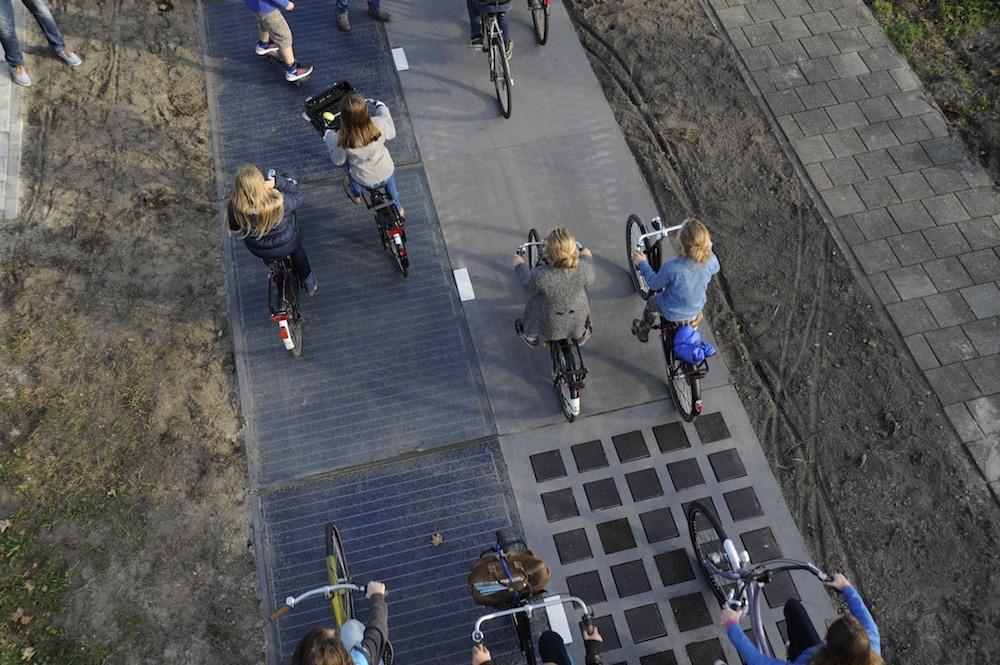
While 3,000 kWh may not sound like much on its own, the implications are far-reaching. If roads, bike paths, and sidewalks across the world could be outfitted with similar solar technologies, they could form an immense, decentralized network of clean energy sources. Given the sheer amount of surface area dedicated to transportation infrastructure globally, the energy-generating potential is enormous.
SolaRoad also proved that solar roads are not only viable but resilient. Despite facing challenges such as dirt, heavy usage, and fluctuating weather, the panels continued to function effectively. The engineers behind the project emphasized that the road had to be designed for more than just energy production—it needed to be safe, durable, and practical. Indeed, after several years in operation, minor damage and wear were addressed and improvements were made, leading to the development of more advanced versions of the technology.
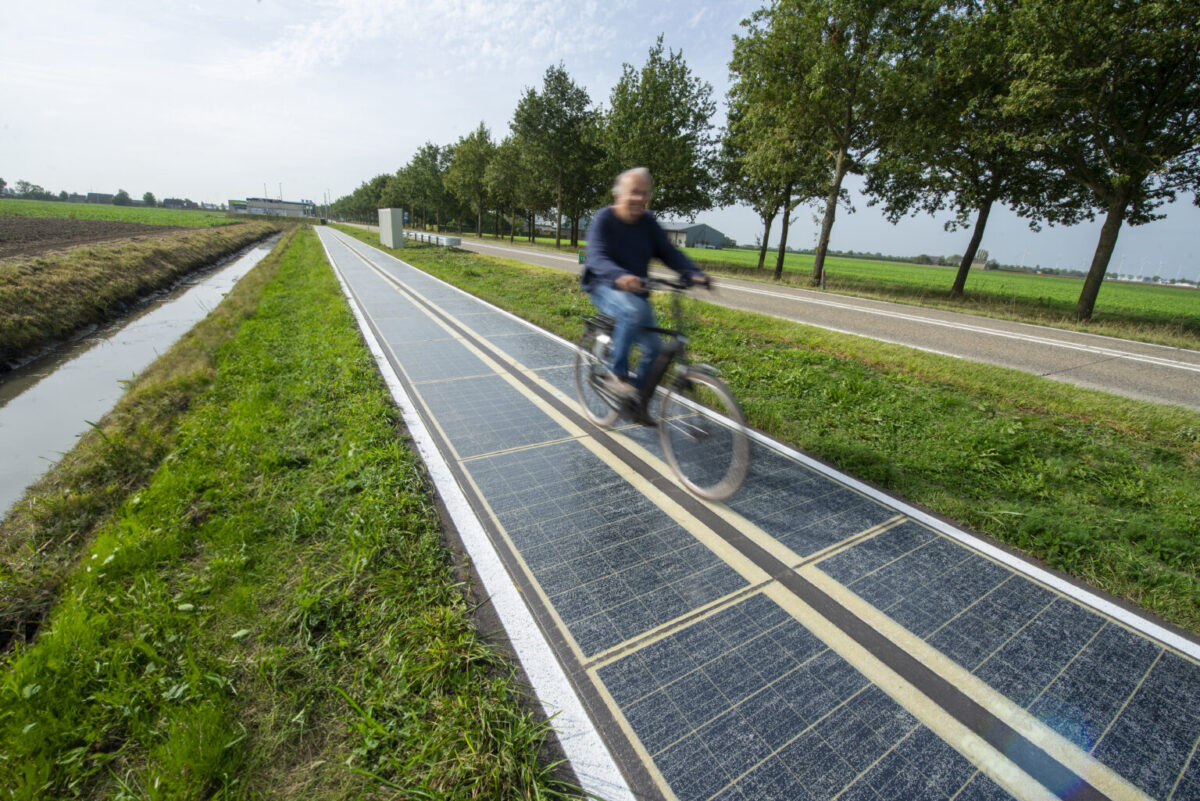
The success of SolaRoad has inspired other countries to explore similar innovations. France, for example, constructed a solar road in Normandy, and the United States has tested solar road panels in pilot projects. However, the Netherlands remains a pioneer in this field, consistently leading the way in integrating sustainable technology into everyday life.
The broader impact of this project lies in its message: infrastructure can evolve. Roads, which have traditionally been passive structures, can become active contributors to our energy systems. As cities and countries around the world face increasing pressure to reduce carbon emissions and transition to renewable energy, solutions like solar roads offer a new avenue to explore.
The journey toward fully functional, large-scale solar roads is still in its early stages, but the road ahead is promising. The Dutch SolaRoad project serves as a symbol of innovation—demonstrating that with creativity and commitment, even the most ordinary parts of our lives, like the paths we cycle on, can play a part in creating a greener, more sustainable world.
In a future shaped by climate challenges, projects like SolaRoad remind us that innovation doesn’t always require reinvention—it can start with rethinking what’s already beneath our feet.
